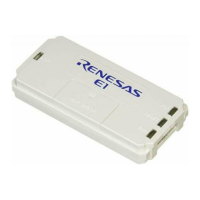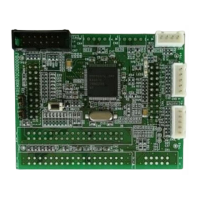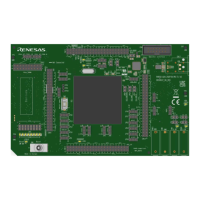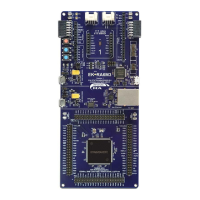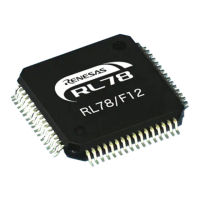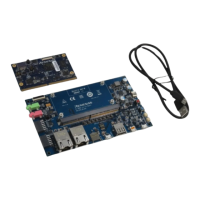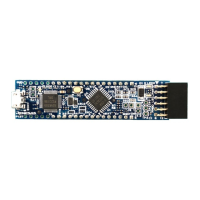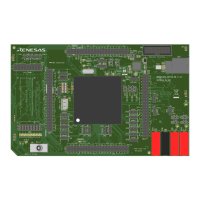1
1-7
OVERVIEW
32180 Group User’s Manual (Rev.1.0)
Table 1.2.1 Features of the 32180 (2/2)
1.2 Block Diagram
Functional Block Features
A-D converter (ADC) • 16 channels: 10-bit resolution A-D converter × 2 blocks
• Conversion modes: Ordinary conversion modes plus comparator mode
• Operation modes: Single conversion mode and n-channel scan mode (n = 1–16)
• Sample-and-hold function: Sample-and-hold function can be enabled or disabled as necessary.
• A-D disconnection detection assist function: Influences of the analog input voltage wrapping
around from any preceding channel during scan mode operation are suppressed.
• An inflow current bypass circuit is built-in.
• Can generate an interrupt or start DMA transfer upon completion of A-D conversion.
• Either 8 or 10-bit conversion results can be read out.
• Interrupt request: Completion of A-D conversion
• DMA transfer request: Completion of A-D conversion
Serial I/O (SIO) • 6-channel serial I/O
• Can be chosen to be clock-synchronized serial I/O or UART.
• Data can be transferred at high speed (2 Mbits per second during clock-synchronized mode or
156 Kbits per second during UART mode when f(BCLK) = 20 MHz).
• Interrupt request: Reception completed, receive error, transmit buffer empty or transmission completed
• DMA transfer request: Reception completed or transmit buffer empty
CAN • 16 message slots × 2 blocks
• Compliant with CAN specification 2.0B active.
• Interrupt request: Transmission completed, reception completed, bus error, error-passive, bus-off
or single shot
• DMA transfer request: Failed to send, transmission completed or reception completed
Real-Time Debugger • Internal RAM can be rewritten or monitored independently of the CPU by entering a command
(RTD) from the outside.
• Comes with exclusive clock-synchronized serial ports.
• Interrupt request: RTD interrupt command input
Interrupt Controller (ICU) • Controls interrupt requests from the internal peripheral I/O.
• Supports 8-level interrupt priority including an interrupt disabled state.
• External interrupt: 35 sources (SBI# and TIN0–TIN33)
• TIN pin input sensing: Rising, falling or both edges or high or low level
Wait Controller • Controls wait states for access to the extended external area.
• Insertion of 0–7 wait states by setting up in software + wait state extension by entering WAIT# signal
PLL • A multiply-by-8 clock generating circuit
Clock • Maximum external input clock frequency (XIN) is 10.0 MHz.
(Note 1)
• CPUCLK: Operating clock for the M32R-FPU core, internal flash memory and internal RAM
The maximum CPU clock is 80 MHz (when f(XIN) = 10 MHz).
• BCLK: Operating clock for the internal peripheral I/O and external data bus
The maximum peripheral clock is 20 MHz (peripheral module access when
f(XIN) = 10 MHz).
• Clock output (BCLK pin output): A clock with the same frequency as BCLK is output from this pin.
JTAG • Boundary scan function
VDC • Internal power supply generating circuit: Generates the internal power supply (2.5 V) from an
external single power supply (5 or 3.3 V).
Ports • Input/output pins: 158 pins
• The port input threshold can be set in a program to one of three levels individually for each port
group (with or without Schmitt circuit, selectable).
Note 1: The maximum external input clock frequency (XIN) for the M32180F8VFP is 8.0 MHz.
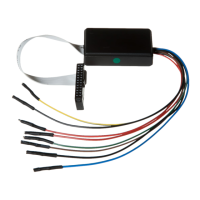
